
1177 B.C.

TURNING POINTS IN ANCIENT HISTORY
Barry Strauss, Series Editor
Turning Points in Ancient History presents accessible books, by leading scholars, on crucial events and key moments in the ancient world. The series aims at fresh interpretations of both famous subjects and little-known ones that deserve more attention. The books provide a narrative synthesis that integrates literary and archaeological evidence.
1177 B.C.
THE YEAR CIVILIZATION COLLAPSED

ERIC H. CLINE
PRINCETON UNIVERSITY PRESS
PRINCETON AND OXFORD
Copyright 2014 by Eric H. Cline
Requests for permission to reproduce material from this work should be sent to Permissions, Princeton University Press
Published by Princeton University Press, 41 William Street, Princeton, New Jersey 08540
In the United Kingdom: Princeton University Press, 6 Oxford Street, Woodstock,
Oxfordshire OX20 1TW
press.princeton.edu
Jacket art: Kerstiaen de Keuninck (Coninck). Fire of Troy. Oil on panel. 58.3 84.8 cm. Inv. no. GE-6780. Courtesy of The State Hermitage Museum, St. Petersburg. Photograph The State Hermitage Museum / photo by Vladimir Terebenin, Leonard Kheifets, Yuri Molodkovets.
All Rights Reserved
Library of Congress Cataloging-in-Publication Data
Cline, Eric H.
1177 B.C. : the year civilization collapsed / Eric H. Cline.
pages cm. (Turning points in ancient history)
Summary: In 1177 B.C., marauding groups known only as the Sea Peoples invaded Egypt. The pharaohs army and navy managed to defeat them, but the victory so weakened Egypt that it soon slid into decline, as did most of the surrounding civilizations. After centuries of brilliance, the civilized world of the Bronze Age came to an abrupt and cataclysmic end. Kingdoms fell like dominoes over the course of just a few decades. No more Minoans or Mycenaeans. No more Trojans, Hittites, or Babylonians. The thriving economy and cultures of the late second millennium B.C., which had stretched from Greece to Egypt and Mesopotamia, suddenly ceased to exist, along with writing systems, technology, and monumental architecture. But the Sea Peoples alone could not have caused such widespread breakdown. How did it happen? In this major new account of the causes of this First Dark Ages, Eric Cline tells the gripping story of how the end was brought about by multiple interconnected failures, ranging from invasion and revolt to earthquakes, drought, and the cutting of international trade routes. Bringing to life the vibrant multicultural world of these great civilizations, he draws a sweeping panorama of the empires and globalized peoples of the Late Bronze Age and shows that it was their very interdependence that hastened their dramatic collapse and ushered in a dark age that lasted centuries. A compelling combination of narrative and the latest scholarship, 1177 B.C. sheds new light on the complex ties that gave rise to, and ultimately destroyed, the flourishing civilizations of the Late Bronze Ageand that set the stage for the emergence of classical GreeceProvided by publisher.
Includes bibliographical references and index.
ISBN 978-0-691-14089-6 (hardback)
1. Bronze ageMediterranean Region. 2. Mediterranean RegionCivilization. 3. Mediterranean RegionHistoryTo 476. 4. Sea Peoples. I. Title.
GN778.25.C55 2014
930.1'56dc23
2013032059
British Library Cataloging-in-Publication Data is available
This book has been composed in Minion Pro
Printed on acid-free paper.
Printed in the United States of America
1 3 5 7 9 10 8 6 4 2
Dedicated to James D. Muhly, who has been debating these issues, and introducing them to his students, for nearly half a century


Frontispiece. Map of the Late Bronze Age civilizations in the Aegean and Eastern Mediterranean.
 CONTENTS
CONTENTS 
PROLOGUE
The Collapse of Civilizations: 1177 BC 1
CHAPTER ONE
Act I. Of Arms and the Man: The Fifteenth Century BC 14
CHAPTER TWO
Act II. An (Aegean) Affair to Remember: The Fourteenth Century BC 43
CHAPTER THREE
Act III. Fighting for Gods and Country:
The Thirteenth Century BC 73
CHAPTER FOUR
Act IV. The End of an Era:
The Twelfth Century BC 102
CHAPTER FIVE
A Perfect Storm of Calamities? 139
EPILOGUE
The Aftermath 171
Dramatis Personae 177
 ILLUSTRATIONS
ILLUSTRATIONS 
FIGURES
TABLES
 SERIES EDITORS FOREWORD
SERIES EDITORS FOREWORD 
T his volume is part of a series called Turning Points in Ancient History. Each book in the series looks at a crucial event or key moment in the ancient world. Always volatile and frequently dramatic, these were points at which history took a new direction. Whether famous or forgotten, they are moments that matter. Our focus is on why and how, as well as on when. Series authors are scholars who know how to tell a story and narrators who have the latest research at their command.
Turning Points in Ancient History reflects wide-ranging trends in the study of the ancient world. Each book integrates archaeology and classic texts; that is, it combines the evidence of material and literary culture. Books look both at the elite and at ordinary lives. The series does not confine itself strictly to the Greco-Roman world, though that certainly is at its core. We examine as well neighboring peoples of Greece and Rome, the non-Greco-Roman people of Greco-Roman lands, and civilizations and peoples of the wider ancient world, both East and West.
This is an exciting time for ancient history. Now more than ever, we realize that understanding the ancient past is essential to our understanding of the present and just plain fascinating.
Few events had a bigger impact on the evolution of the ancient world than the end of the Bronze Age. It was then that the great kingdoms and city-states of prehistory fell. They left behind stirring monuments like the Pyramids and dimly remembered tales such as the ones that were eventually reshaped into the Trojan War saga. To those who lived through it, the calamity seemed to be the end of the world. Yet the end of the massive palatial states of the Bronze Age opened the door for the growth of a new world on a more human scale, the world of the first millennium BC, a world in which we are still at home today.
1177 B.C.: The Year Civilization Collapsed begins with the invasion of Egypt by the Sea Peoples in 1177 and moves outward and backward. It takes us to the Late Bronze Age in the glory days of the fifteenth century BC and surveys a range of civilizations from Mesopotamia to Greece, and from Israel to the Hittites. Then it proceeds over the centuries to the processes, people, and events that brought down a world. Throughout there is a fingertip feel for the evidence. The scale of detail is as grand as the sack of the Syrian port city of Ugarit around 1190 BC, and as intimate as a CT scan of King Tuts skeleton and the infection after a broken leg that probably killed him.
Next page
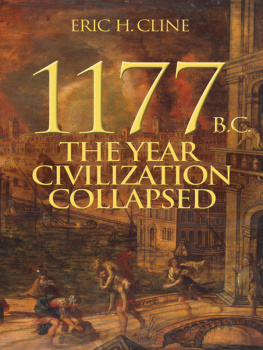


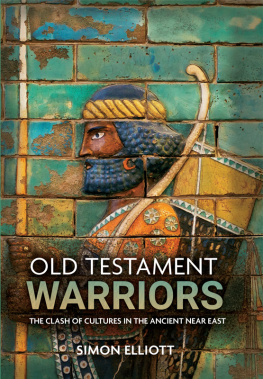
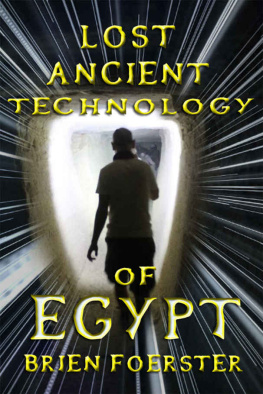
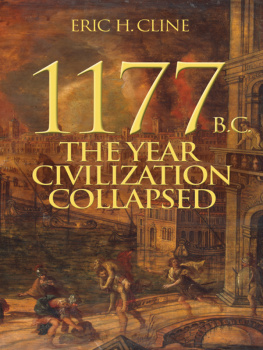
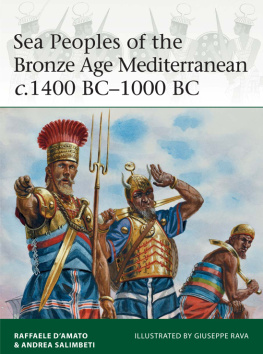
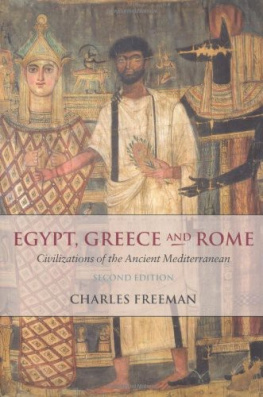



 CONTENTS
CONTENTS 